New study may help uncover the true impact of childhood lead exposure
Powered by WPeMatico
Powered by WPeMatico
Powered by WPeMatico
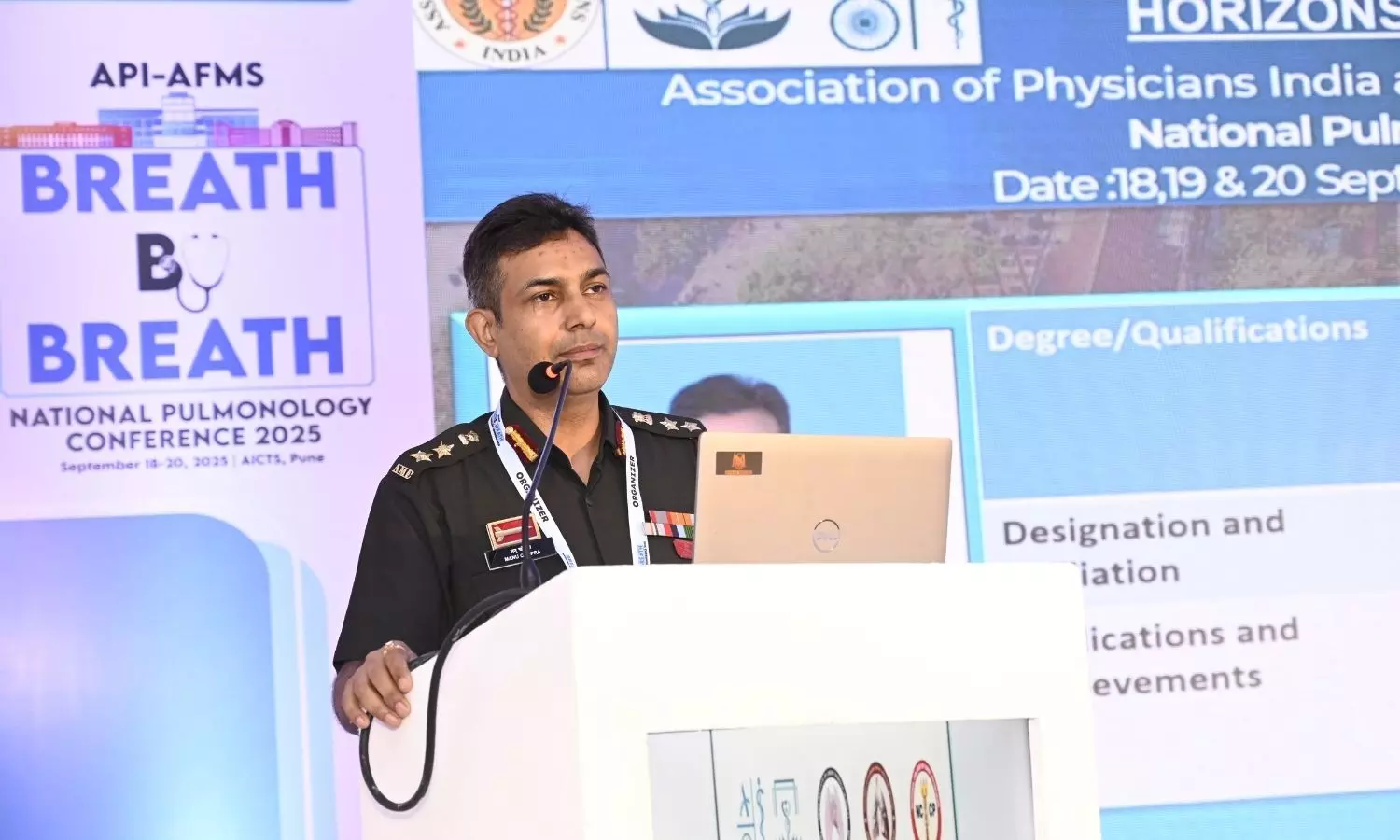
Pune: The Army Institute of Cardio Thoracic Sciences (AICTS), Pune, is hosting the Association of Physicians of India (API) – Armed Forces Medical Services (AFMS) National Pulmonology Conference from 18th to 20th September 2025.
This prestigious event brings together leading experts in Pulmonary Medicine from the Armed Forces and premier academic institutions across the country to discuss advancements and strategies for improving care for patients with respiratory diseases.
The conference commenced on 18th September with seven hands-on workshops, attended by over 300 residents and nearly 100 faculty members. These workshops offered a rare and valuable opportunity for trainee doctors from various specialties to engage directly with some of India’s foremost pulmonologists and gain practical experience under expert guidance.
Also Read:Pune: Army Institute of Cardio-Thoracic Sciences gets cardiopulmonary rehab centre
The conference was inaugurated by Lt Gen P. P. Rao, Director and Commandant of AFMC (Armed Forces Medical College). The keynote address was delivered by Padma Shri Dr Randeep Guleria, titled “Healthcare in 2030: Preparing for the Respiratory Revolution”, setting an insightful tone for the sessions to follow.
The conference included discussions on recent advancements in respiratory medicine, in-depth analyses of systemic diseases affecting the lungs, and thoughtful deliberations on the modern-day care of tuberculosis patients.
Organized by the Department of Respiratory Medicine, AICTS, Pune, the conference has drawn more than 150 faculty members and over 500 delegates from across the country. The event serves as a dynamic platform for the exchange of cutting-edge research, clinical insights, and innovative ideas.
Maj Gen P. K. Sharma, Commandant, AICTS and Organizing Chairperson, expressed great satisfaction at the successful inauguration of this landmark event. He highlighted that AICTS has been a pioneer in respiratory care since its inception in 1948, and emphasized the importance of such gatherings in fostering collaboration and innovation in the field.
Also Read:Army Hospital launches state-of-the-art Femto-LASIK Suite for spectacle removal
Powered by WPeMatico
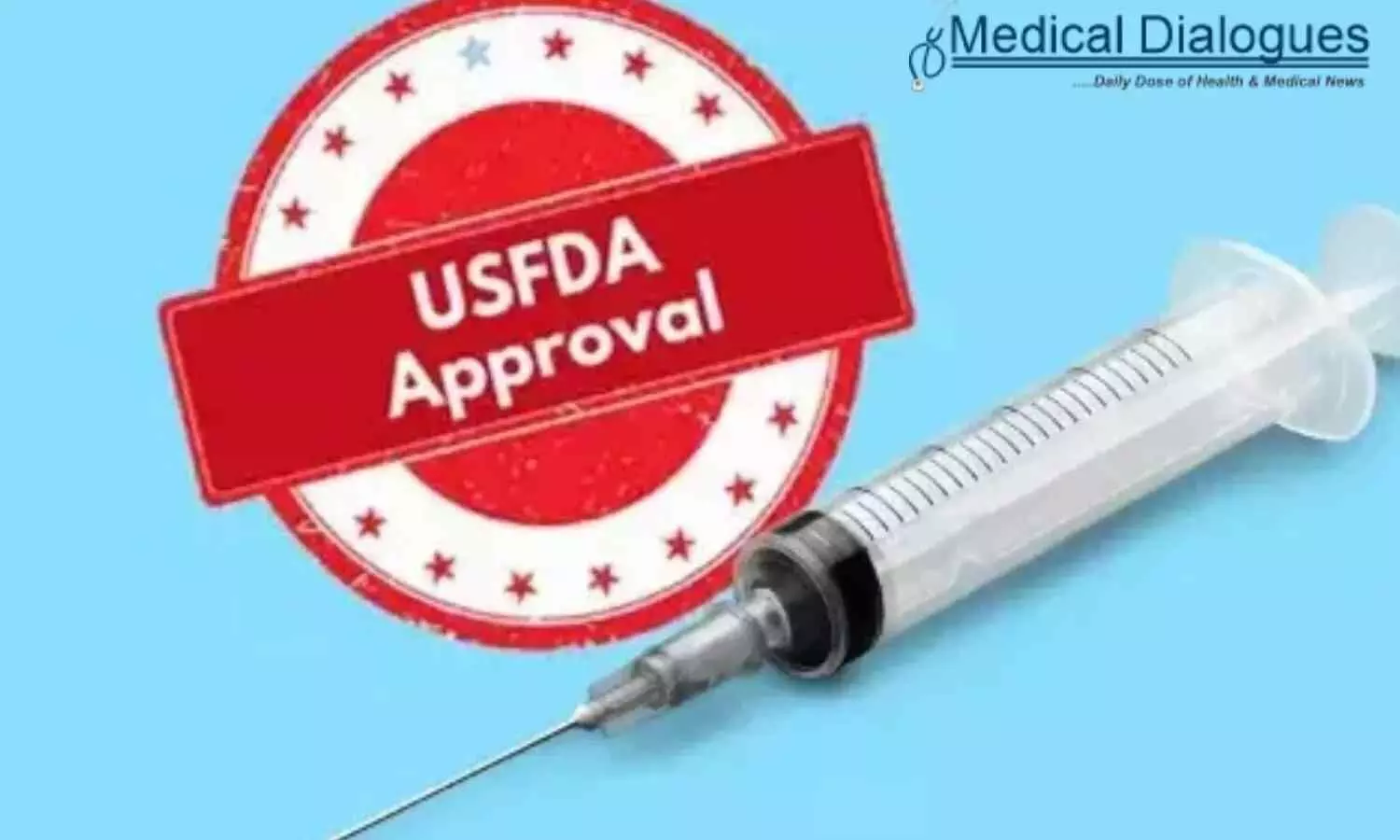
Rahway: Merck, known as MSD outside of the United States and Canada, has announced that the U.S. Food and Drug Administration (FDA) has approved KEYTRUDA QLEX (pembrolizumab and berahyaluronidase alfa-pmph) injection for subcutaneous administration in adults across most solid tumor indications for KEYTRUDA (pembrolizumab).
Berahyaluronidase alfa is a variant of human hyaluronidase developed and manufactured by Alteogen Inc. KEYTRUDA QLEX must be administered by a health care provider (HCP). Merck expects to have KEYTRUDA QLEX (pronounced key-TRUE-duh Q-lex) available in the U.S. in late September.
“This approval is significant for patients and health care providers like me who have been using immunotherapies for years to treat certain cancers. We now have a new option with a broad set of indications that has demonstrated comparability with intravenous (IV) pembrolizumab but in a subcutaneous injection that can be administered in one minute every three weeks or two minutes every six weeks,” said Dr. J. Thaddeus Beck, oncologist and Medical Director of the Highlands’ Clinical Trials Office. “Subcutaneous pembrolizumab provides faster administration than IV pembrolizumab, offers two dosing options and gives patients more choices of health care settings in which they can receive their therapy.”
The pivotal trial comparing subcutaneous KEYTRUDA QLEX to IV KEYTRUDA administered every six weeks, each with chemotherapy, was conducted in patients with treatment-naïve metastatic non-small cell lung cancer (NSCLC) with no EGFR, ALK or ROS1 genomic tumor aberrations. This trial demonstrated comparable pharmacokinetic exposure levels to pembrolizumab [assessed as Cycle 1 AUC0-6 weeks (area under the curve from 0 to 6 weeks) and Cycle 3 (i.e. Steady State) Ctrough]. In descriptive efficacy analyses, overall response rates (ORR) were similar between KEYTRUDA QLEX and KEYTRUDA (45% [95% CI: 39, 52] vs 42% [95% CI: 33, 51]). Additionally, no notable differences were observed in progression-free survival (PFS) and overall survival (OS). Effectiveness of KEYTRUDA QLEX for its approved indications was established based on these data and pivotal trial data demonstrating comparable safety with KEYTRUDA, as well as evidence from adequate and well-controlled studies conducted with KEYTRUDA.
KEYTRUDA QLEX is contraindicated in patients with known hypersensitivity to berahyaluronidase alfa, hyaluronidase or to any of its excipients.
As a subcutaneous injection, KEYTRUDA QLEX may provide added convenience compared to IV KEYTRUDA because it can be administered by HCPs in multiple settings from an infusion center to a doctor’s office or a local community-based clinic, providing more options where patients can receive their treatment. KEYTRUDA QLEX also provides flexibility in treatment administration. It can be given in one minute every three weeks or in two minutes every six weeks, requiring substantially less time to administer than a 30-minute IV infusion of KEYTRUDA, and also offers a choice of injection site in the thigh or abdomen avoiding the 5 cm area around the navel. For patients who do not require a port or whose veins are difficult to access, subcutaneous administration may simplify treatment administration.
“At Merck, we are committed to putting patients first, as we work relentlessly to discover new options that may help patients manage their treatment in a way that fits their needs,” said Dr. Marjorie Green, senior vice president and head of oncology, global clinical development, Merck Research Laboratories. “We are honored to build on the foundation of KEYTRUDA with KEYTRUDA QLEX, a new injectable immunotherapy option that has similar results to KEYTRUDA and can be administered in as little as one minute.”
“As part of supporting patients and families through their cancer journeys, we are excited to see patient-focused developments in subcutaneous cancer treatment that shorten administration time and may allow for more patients to receive treatment in multiple health care settings,” said Sally Werner, Chief Executive Officer, Cancer Support Community.
Powered by WPeMatico

Lucknow: In a recent case of fraud, resident doctors from King George’s Medical University (KGMU), Lucknow, fell victim to an elaborate multi-level marketing (MLM) scheme, losing nearly Rs 23 lakh. They have registered an FIR against three of their colleagues, accusing them of cheating by promising high returns on investment.
According to the complaint, the accused doctors posed as company representatives and convinced the junior and senior resident doctors to invest by promising high returns and a lavish lifestyle.
They alleged that the accused lured them with fabricated documents and papers that showed large profits, luxury lifestyles, and photographs of supposed beneficiaries if they invested in the scheme.
Also read- Unfortunate: 76-year-old doctor dies of heart attack after 3-day digital arrest
In the hope of huge returns, the residents transferred money both through credit cards and directly into the personal account of one of the doctors. They claimed that they were even pressured to sign papers at hotels under the guise of “general terms and conditions.”
In some cases, they were asked to bring in their fellow colleagues, whose investments were also routed through them. Small payments, portrayed as “commission”, were given to make the scheme look real.
In this regard, the complainants also alleged that the accused doctors used their Aadhaar and PAN details in the scheme. They have accused the doctors of misusing their Aadhaar and PAN details to create fake email IDs, credit cards, and even fraudulent accounts on the company’s online portal, showing their relatives as new “investors” under them.
The suspicion that the scheme is fraudulent arose when some victims demanded their money back, but instead received threats with false cases, career sabotage, and even death from the accused doctors, as reported by TOI.
The complainants further alleged that one of the accused doctors filed a false cyber complaint against one of them in Amethi, resulting in the freezing of his bank account.
The doctors said the fraud was a “well-planned racket” targeting medical professionals, designed to exploit trust among colleagues. Subsequently, they approached the police and registered an FIR against the three doctors of KGMU under relevant sections of the BNS.
Also read- Sangli doctor robbed of Rs 2 crore in Fake Income Tax Raid
Powered by WPeMatico
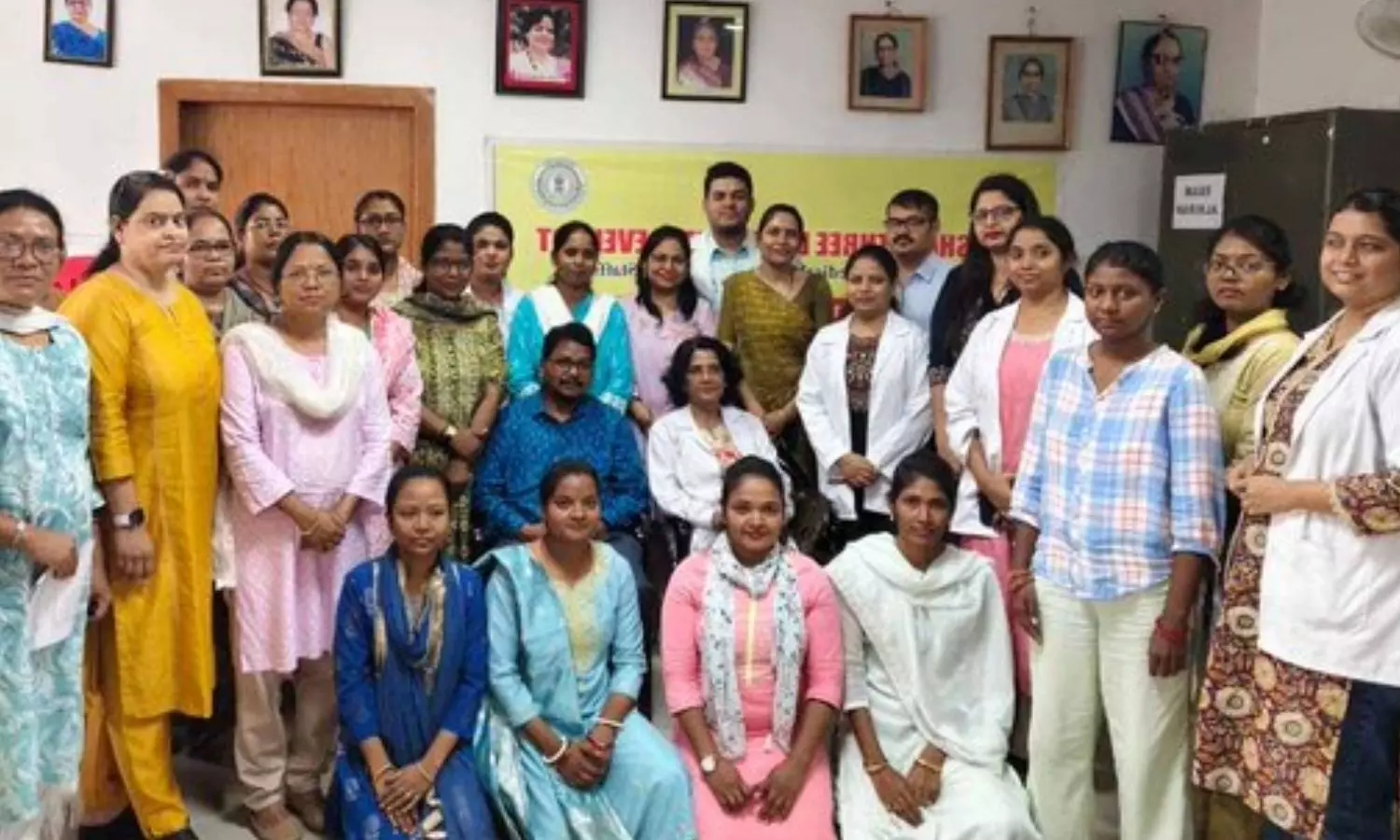
Ranchi: The Rajendra Institute of Medical Sciences (RIMS), the state’s largest government hospital, is organizing a three-day special competency training programme for trainers focused on ensuring safe childbirth.
The programme is being organised by the Maternal Health Division of the National Health Mission (NHM).
Specialist doctors and staff nurses from labour rooms across various districts are participating in this second batch of training.
Also Read:Ranchi: 2,600-bed Super Speciality Hospital RIMS-2 set to boost Medical Tourism
According to a UNI report, speaking on the occasion, Dr Amita Bharti, Head of the Gynaecology Department at RIMS, said, “All participants are receiving hands-on training in the labor room to achieve the goal of safe deliveries. The training will equip them with childbirth skills and ways to address challenges that arise during delivery.”
Dr Bharti highlighted that Jharkhand has shown better maternal and infant health indicators compared to national averages.
“While the national average of maternal mortality is 97, Jharkhand stands at 54. Similarly, the infant mortality rate is 28 nationally, while Jharkhand’s figure is 25. Our goal is to bring both indicators down to single digits,” she said. She further explained that trainees are also being taught the critical steps to follow while referring patients in emergency conditions to save lives.
Dr Lal Majhi, State Programme Officer (IEC), NHM, said the training aims to empower healthcare professionals, especially those working in labour rooms in rural and urban areas, with modern techniques and emergency response skills.
“This programme covers neonatal care, management of post-delivery complications, hygiene, infection control, and nutrition needs of mothers and newborns. It is an integral part of the government’s commitment to reducing maternal and infant mortality rates,” he said, adding, “Only trained health workers can ensure a safe and healthy future for mothers and children.”
The programme is being technically supported by UNICEF.
Also Read:Dr Shashibala Singh takes over as Interim Director of RIMS Ranchi
Powered by WPeMatico

New Delhi: Max Healthcare, one of the largest private sector healthcare services companies in India, and Medtronic, a global leader in healthcare technology, announced the inauguration of the Max-Medtronic Skill Lab at Max Super Specialty Hospital, Saket, New Delhi.
The facility is designed to advance training in minimally invasive surgical techniques and marks a significant step in their shared commitment to clinical excellence and education.
This strategic collaboration aims to advance medical education and clinical training in laparoscopic and minimally invasive surgical techniques. In addition to training, Max-Medtronic Skill Lab will also prioritize educating patients and caregivers about the benefits of these advanced minimally invasive procedures, such as faster recovery, smaller incisions, reduced infection risk, and less tissue trauma compared to traditional surgeries .
Also Read:Max Healthcare, Global Health Alliance UK partner for Medical Innovation
The Lab will offer comprehensive, structured training modules for a wide range of medical professionals, including surgeons, nurses, OT technicians, and paramedics, ranging from hands-on workshops to advanced upskilling sessions.
Spearheaded by Max Healthcare’s experienced in-house faculty and facilitated by Medtronic, these programs aim to provide a robust, practical, and impactful learning experience for all medical professionals.
“At Max Healthcare, we are committed to fostering a culture of continuous learning and clinical excellence. The Max-Medtronic Skill Lab is a significant step toward creating a structured, high-impact training ecosystem for our medical professionals. This initiative not only aims to improve clinical competencies but also empowers patients and caregivers through increased awareness of advanced surgical techniques”, said Dr Sandeep Budhiraja, Group Medical Director, Max Healthcare.
“This collaboration with Max Healthcare reaffirms our unwavering commitment to advancing access to high-quality healthcare through education, innovation, and strategic partnerships. Max-Medtronic Skill Lab is designed to provide hands-on training and foster continuous learning in laparoscopic and minimally invasive surgical techniques.
Through this initiative, Medtronic seeks to empower healthcare professionals with the tools and knowledge needed to deliver better outcomes and transform patient care”, said Mandeep Singh Kumar, Managing Director and Vice President of Medtronic India.
As part of this collaboration, both partners will also focus on regular upskilling programs for paramedical staff, an often overlooked yet critical component of the surgical care team.
The Max-Medtronic Skill Lab is set to become a benchmark in clinical education and innovation, aligning with the Government’s vision for a skilled and empowered healthcare workforce.
At the inaugural event, present were key leaders from Max Healthcare and Medtronic, including Dr. Pradeep Chowbey, Chairman – Max Institute of Laparoscopic, Robotic and Bariatric Surgery; Dr Vinitaa Malhotra Jha Executive Vice President – Research & Academics Clinical Directorate, Max Healthcare; Dr Subhash Gupta, Chairman – Max Centre for Liver and Biliary Sciences, Dr. Manish Baijal, Senior Director – Max Institute of Laparoscopic, Robotic and Bariatric Surgery. From Medtronic, attendees included Feng Dong, Vice President, Asia Region-Led Markets, EurAsia; Mandeep Singh Kumar, Managing Director and Vice President; and Abhishek Bhargava, Senior Director, Medical Surgical, Medtronic India.
Also Read:Max Healthcare opens 300-bed hospital in Dwarka, plans 3,700 more beds by 2028
Powered by WPeMatico
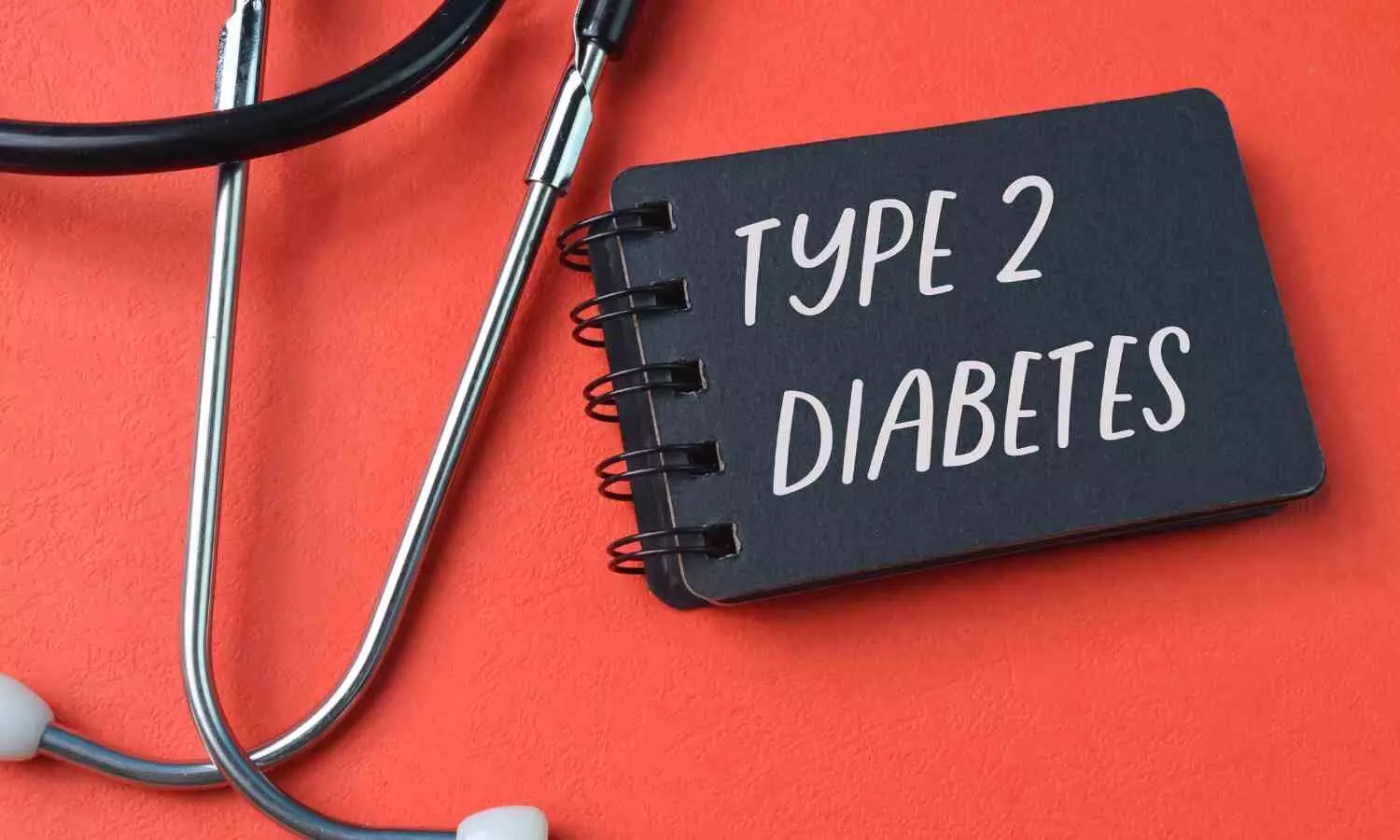
New research shows that that the diabetes/obesity medication tirzepatide can cause clinically meaningful improvements in blood sugar control and weight loss in children and adolescents with type 2 diabetes aged 10-17 years whose diabetes and weight are inadequately controlled with an existing treatment regimen of metformin, insulin, or both.
The study (the SURPASS-PEDS trial), by Dr Tamara Hannon, Division of Pediatric Endocrinology and Diabetology, Indiana University School of Medicine, Indiana University School of Medicine, Indianapolis, USA, and colleagues is presented at this year’s Annual Meeting of the European Association for the Study of Diabetes (EASD) in Vienna, Austria (15-19 September) and published in The Lancet. The study is sponsored by Eli Lilly and company, the manufacturer of tirzepatide.
Youth-onset type 2 diabetes (YT2D) is a rapidly progressing disease with rising incidence in recent years, primarily driven by the increase in the global prevalence of obesity. The overall incidence of type 2 diabetes in children and adolescents in USA has nearly doubled across 15 years, going from 9.0 to 17.9 cases per 100,000 persons per year between 2002-03 and 2017-18.
There are limited treatment options to improve blood sugar (glycaemic) control in YT2D. Existing therapeutics have generally demonstrated lower glycaemic efficacy in YT2D compared to adults with T2D, without clinically meaningful impact on weight as measured by body mass index (BMI). Tirzepatide is a once weekly GIP/GLP-1 receptor agonist approved for the treatment of adults with T2D, obesity, and obstructive sleep apnoea (in the USA, and approved for treating T2D and obesity in many other countries). The safety and efficacy of tirzepatide in YT2D is yet to be reported.
In this phase 3 trial, 99 young people aged 10-17 years with YT2D with inadequate glycaemic control with metformin, basal insulin, or both, were randomized in a 1:1:1 ratio to receive blinded treatment with tirzepatide (5 mg or 10 mg) or placebo (PBO) once weekly for 30 weeks followed by a 22-week open-label extension*. The primary aim was to demonstrate superiority of tirzepatide (looking at the pooled results of both doses combined) versus placebo for change in glycated haemoglobin (HbA1c – a measure of blood sugar control) at 30 weeks. Analyses included all participants who received at least 1 dose of study drug, excluding data after discontinuation of study drug or initiation of glycaemic rescue therapy (this is when a person’s blood sugar is so high they need intensive medical treatment to recover).
At baseline, the mean age was 14.7 years, mean duration of diabetes was 2.4 years, and participants were treated with metformin (68.7%), basal insulin (8.1%), or both (23.2%). At 30 weeks, tirzepatide was superior to placebo for improving HbA1c, fasting serum glucose, BMI, and incidence of HbA1c of 6.5% or less (below the range for diabetes) and 5.7% of less (below the range for prediabetes). In the placebo group, these indicators barely changed or did not change across the 30 weeks of the study.
At the start of the study all of the children had HbA1c above 6.5%, classifying them as having type 2 diabetes. At 30 weeks, the pooled tirzepatide results shows that more than three quarters (79%) of children taking tirzepatide had HbA1c of less than 6.5%, and more than half (53%) had and HbA1c of less than 5.7%, compared to 29% and 14% respectively for those taking placebo
And while mean BMI fell just 0.4 points across the 30 weeks in the placebo group, from 34.7 to 34.3 kg/m2, in the pooled tirzepatide group mean BMI fell 9.3 units from 35.6 to 26.3 kg/m2. Fasting glucose levels fell by around 6 times more in the pooled tirzepatide group (2.46 units) than the placebo group (0.44 units)
The estimated mean treatment difference (between tirzepatide pooled results and placebo) for change from baseline were: HbA1c -24.9 mmol/mol (-2.3%), FSG -2.0 mmol/L (-36.3 mg/dL) and BMI -8.9%. At 52 weeks, estimated mean change from baseline in HbA1c was -24.2 mmol/mol (-2.21%) and percent change in BMI from baseline was -12.0%, for TZP pooled.
The most common adverse events on tirzepatide were gastrointestinal, mild to moderate in severity, occurred mostly during dose escalation, and generally decreased over time (consistent with trials in adults). Treatment discontinuation due to adverse events occurred in 6.3% of participants in tirzepatide 5 mg and 0% in tirzepatide 10 mg and placebo. No severe hypoglycaemia episodes were reported during the study. Glycaemic rescue therapy was initiated by 18% of participants in the placebo group and 0 participants in the tirzepatide pooled group.
The authors conclude “Tirzepatide demonstrated significant and clinically meaningful improvements in blood sugar control and BMI in youth with type 2 diabetes. The impact on blood sugar control was sustained over the one year trial period and improvements in BMI continued through the year and did not plateau.”
“Tirzepatide is the first drug used for type 2 diabetes in this age group that has shown sustained clinically, meaningful BMI lowering effects…These results support tirzepatide as a potential safe and efficacious treatment option for youth-onset type 2 diabetes.”
Reference:
Prof Tamara S Hannon, Lily C Chao, Margarita Barrientos-Pérez, Karthik Chandrasekhar Pamidipati, Efficacy and safety of tirzepatide in children and adolescents with type 2 diabetes (SURPASS-PEDS): a randomised, double-blind, placebo-controlled, phase 3 trial, The Lancet.
Powered by WPeMatico
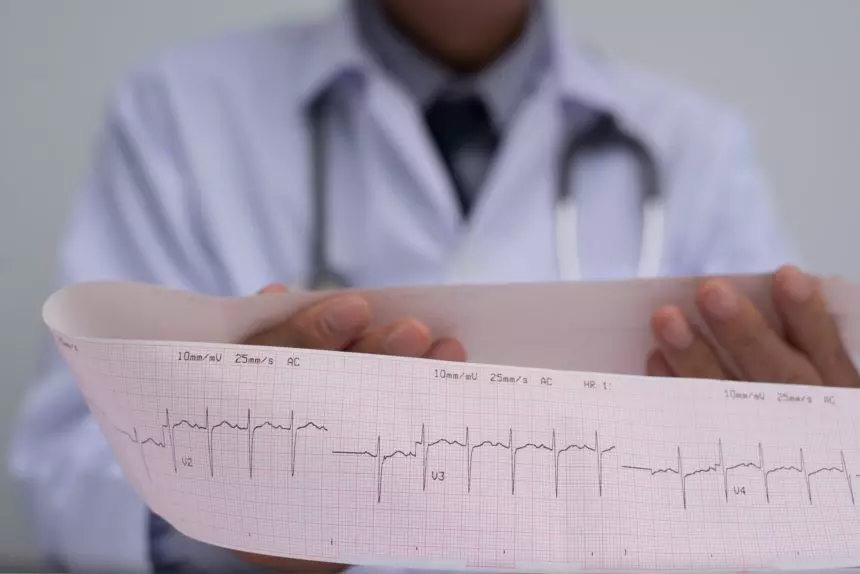
A new study published in the Journal of American Medical Association showed that patients at risk for complete heart block (CHB) may be risk-stratified using the AI-ECG model known as AIRE-CHB, which might inform therapy choices such empirical pacemaker insertion or rhythm monitoring.
Ventricular standstill, syncopal damage, and abrupt cardiac death are all possible outcomes of complete heart block, a potentially fatal condition brought on by severe conduction system dysfunction.
When there are no reversible reasons of CHB, permanent pacemaker (PPM) implantation is the therapy of choice. The gold standard for diagnosing CHB is an electrocardiogram (ECG). The difficulty in diagnosing CHB is that the conduction system illness may be intermittent, and the ECG may not exhibit signs of high-grade atrioventricular (AV) block at the time of recording.
Recent research has demonstrated the great potential of artificial intelligence-enhanced ECG (AI-ECG) to identify concealed cardiovascular illness and forecast future disease risk. The goal of this work was to create an AI-ECG risk estimator for CHB (AIRE-CHB) that could forecast incident CHB.
The UK Biobank volunteer cohort served as the external validation for this cohort research, which was a development and external validation prognostic study carried out at Beth Israel Deaconess Medical Center. more than 31 days following the ECG, a new CHB diagnosis. AIRE-CHB was trained to predict incident CHB using a residual convolutional neural network architecture with a discrete-time survival loss function.
The Beth Israel Deaconess Medical Center cohort comprised 189,539 patients’ 1,163,401 ECGs. With an area under the receiver operating characteristics curve (AUROC) of 0.889 (95% CI, 0.863-0.916) and a C index of 0.836 (95% CI, 0.819-0.534), AIRE-CHB forecasted incidence CHB within a year.
By contrast, bifascicular block was associated with an AUROC of 0.594 (95% CI, 0.567-0.620). When compared to the low-risk group, the adjusted hazard ratio (aHR) for the development of incident CHB was 11.6 (95% CI, 7.62-17.7; P <.001) for participants in the high-risk quartile.
The C index for incident CHB prediction in the UKB UK Biobank cohort, which included 50,641 ECGs from 189,539 patients, was 0.936 (95% CI, 0.900-0.972), and the aHR was 7.17 (95% CI, 1.67-30.81; P <.001). Overall, an unprecedented deep learning algorithm determined the likelihood of event CHB. The model’s credibility was established through thorough evaluations of explainability and biological plausibility.
Reference:
Sau, A., Zhang, H., Barker, J., Pastika, L., Patlatzoglou, K., Zeidaabadi, B., El-Medany, A., Khattak, G. R., McGurk, K. A., Sieliwonczyk, E., Ware, J. S., Peters, N. S., Kramer, D. B., Waks, J. W., & Ng, F. S. (2025). Artificial intelligence–enhanced electrocardiography for complete heart block risk stratification. JAMA Cardiology. https://doi.org/10.1001/jamacardio.2025.2522
Powered by WPeMatico
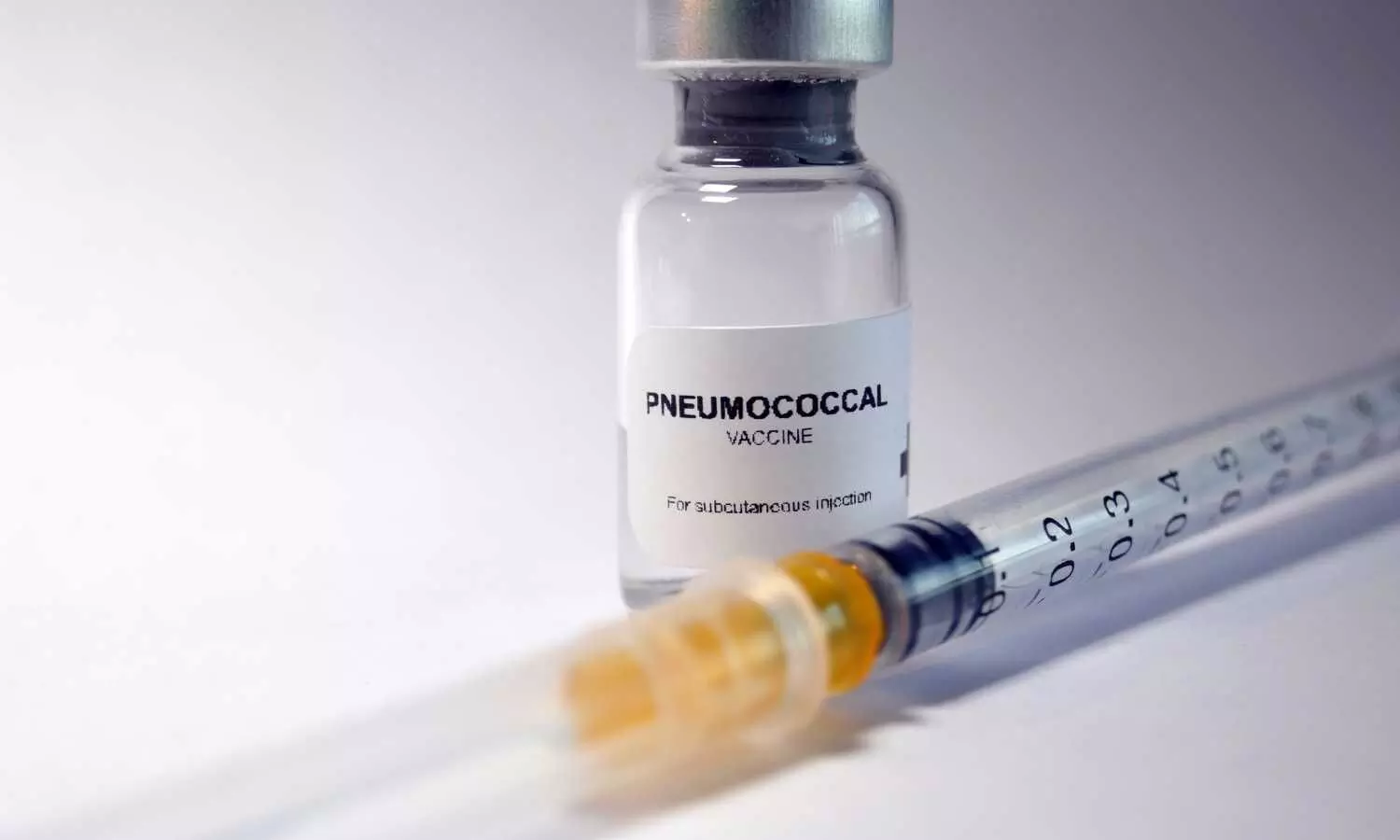
A new study published in the Journal of American Medical Association found that pneumococcal polysaccharide vaccine (PPV23) vaccination did not reduce rates of fatal and nonfatal acute coronary syndrome or ischemic stroke.
The trial was conducted at 6 centers across Australia investigated the vaccine’s cardiovascular impact. Between 2016 and 2017, this research recruited 4,725 community-dwelling adults aged 55 to 60 who had no prior history of cardiovascular disease but did carry at least 2 risk factors such as obesity, high blood pressure, or elevated cholesterol.
The participants were randomly assigned to receive either the 23-valent pneumococcal polysaccharide vaccine (PPV23) or a saline placebo, with neither patients nor clinicians aware of the allocation. Over an average follow-up of 7 years, where this study tracked participants through electronic health records covering hospital admissions, emergency visits, and mortality data. The primary measure was a combined endpoint of fatal and nonfatal acute coronary syndrome (including heart attacks) and ischemic stroke.
The results showed no statistically significant difference between the 2 groups. In the PPV23 arm, 58 participants experienced a primary outcome event, when compared with 64 in the placebo arm. This translated to a hazard ratio of 0.90 (95% confidence interval, 0.63–1.28; P = .57), which suggested no meaningful reduction in risk. Exploratory analyses of all-cause mortality, hospitalizations for any reason, and cardiovascular-related procedures also showed no significant differences.
The overall number of cardiovascular events was lower than anticipated. This low event rate reduced the statistical power of the trial, making it difficult to detect modest protective effects if they exist. While the vaccine was safe and well tolerated, the data do not support its use as a strategy for preventing cardiovascular disease.
Previous studies had suggested that pneumococcal vaccination might play a role in reducing atherosclerosis through immune-mediated mechanisms. However, without randomized trial evidence, those signals remained speculative. Overall, this trial highlights the need for adequately powered studies before vaccines can be repurposed for heart disease prevention. While PPV23 remains an essential tool for preventing pneumococcal infections in older adults and vulnerable populations, its role in cardiovascular protection appears limited.
Source:
Hure, A., Peel, R., D’Este, C., Abhayaratna, W. P., Tonkin, A., Hopper, I., Thrift, A. G., Levi, C., Sturm, J., Durrheim, D., Hung, J., Briffa, T., Chew, D. P., Ren, S., McEvoy, M., Hansbro, P., Newby, D., Szwec, S., Chiu, S., & Attia, J. (2025). Prevention of Adverse Cardiovascular Events Using the 23-Valent Pneumococcal Polysaccharide Vaccine. JAMA Cardiology. https://doi.org/10.1001/jamacardio.2025.3043
Powered by WPeMatico
